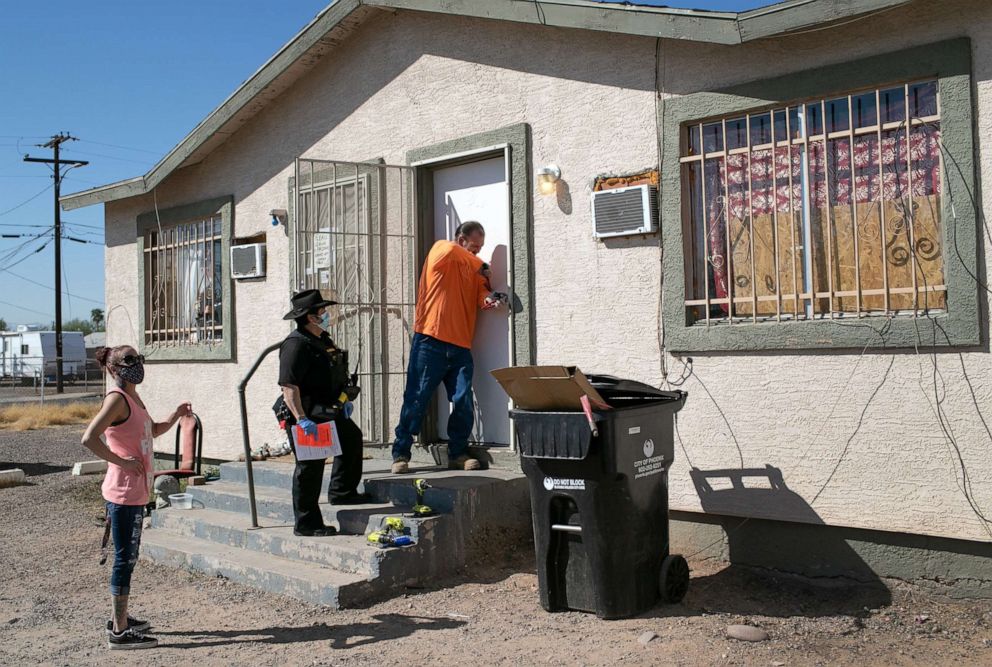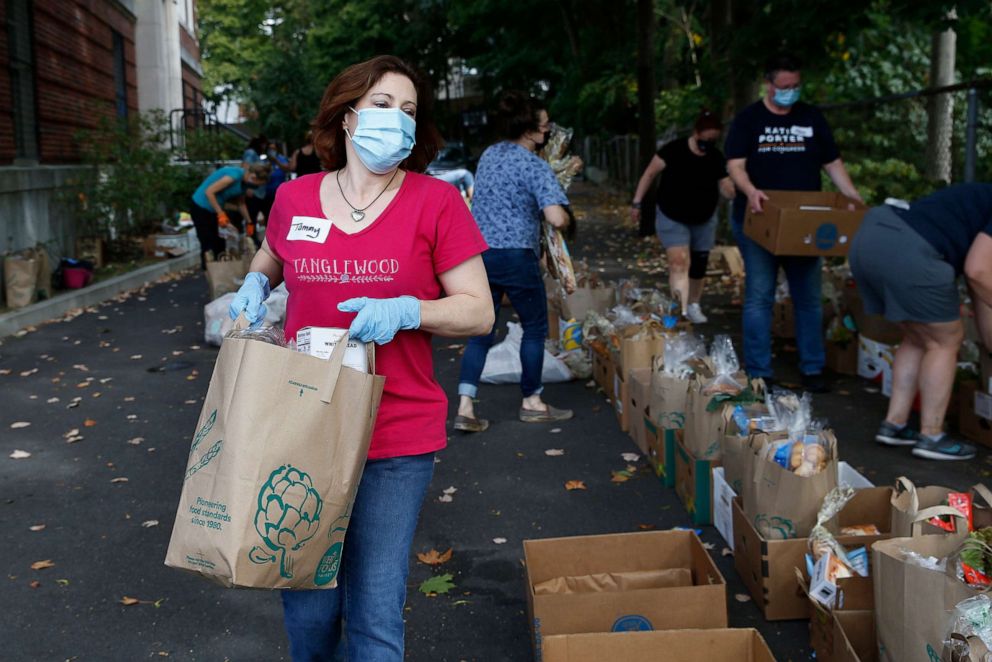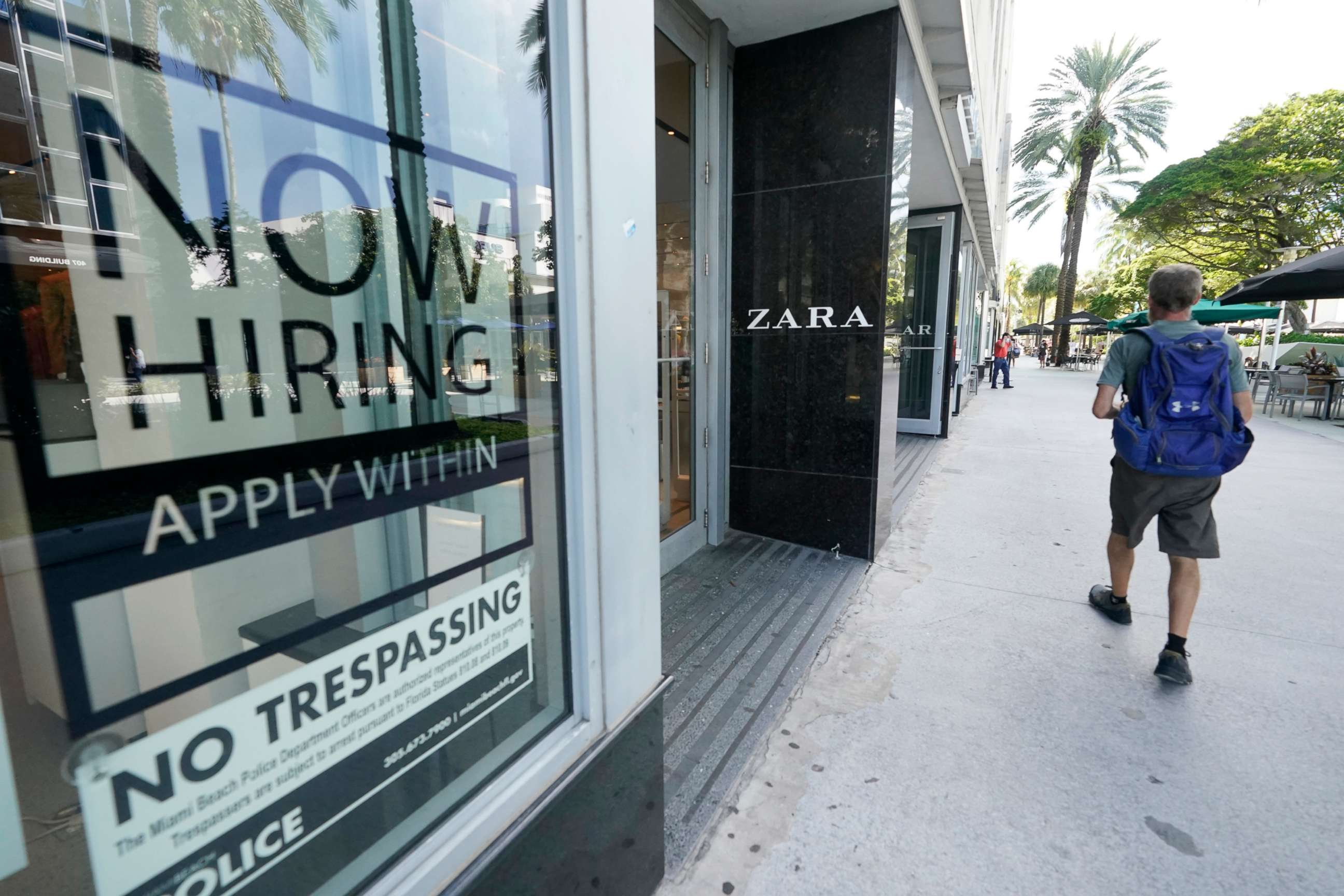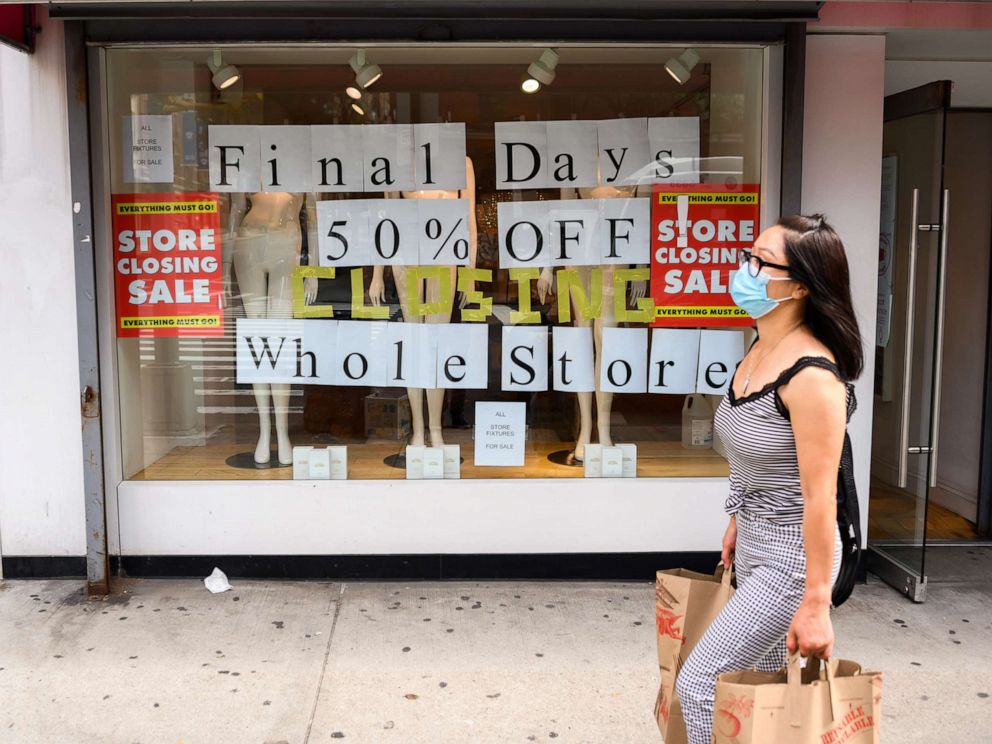Unemployment rate falls to 6.9% in October as employers hired 638,000 workers
"The economy doesn't stop just because there is an election happening."
The unemployment rate in the U.S. fell to 6.9% and employers added 638,000 jobs last month, the Labor Department said Friday.
The latest jobs report comes in the midst of a presidential race that remains too close to call and paints a picture of an economy still beleaguered by a global pandemic. Prior to the COVID-19 crisis, the unemployment rate in the U.S. was 3.5%, its lowest level in decades.
"The economy doesn't stop just because there is an election happening," Daniel Zhao, senior economist at Glassdoor, told ABC News ahead of the report's release. "We’re still in the depths of significant economic crisis."

Notable job gains in October -- some seven months since the coronavirus pandemic clobbered the U.S. labor market -- occurred in leisure and hospitality (an increase of 271,000 jobs), professional and business services (an uptick of 208,000 jobs) and retail trade (a rise of 104,000 jobs). Also notable: An additional 84,000 jobs were added in construction last month.
"These improvements in the labor market reflect the continued resumption of economic activity that had been curtailed due to the coronavirus (COVID-19) pandemic and efforts to contain it," the DOL said.
Meanwhile, job losses occurred in government employment -- which fell by some 268,000 jobs last month. Many of those jobs, however, were temporary Census workers, the DOL said.

According to Zhao, Friday's report is "backwards-looking," adding that "it won't fully incorporate the effects of the third wave of COVID-19 cases seen around the country." On Wednesday, the U.S. hit a grim milestone of surpassing 100,000 new cases in a single day. The country set another daily record on Thursday.
"The unfortunate thing about this report is there is so much uncertainty in the upcoming months," Zhao said. "So even though this report might show us something about the trajectory of the recovery, it doesn't tell us much about what's going to happen if the pandemic worsens in the winter or if negotiations [on stimulus] in Congress fall through."
"It's clear that the virus is still in the driver's seat," he added. "We can't make a full economic recovery without first getting the health crisis under control."
As the election looms large over the economy, Zhao noted that Friday's jobless report "sets the economic stage for the next four years."
"It tells us what the challenges facing the next president will be, and for the most part those are quite clear -- the president is facing a health crisis as well as an economic crisis," he explained.
Uneven recoveries
Elise Gould, a senior economist at the Economic Policy Institute, said the number of job gains last month can "look huge in a historical context, but it's misleading to look at those numbers in isolation."
"I think it's important to look at the hole that we still have, and how long it might take to fill that gap at that pace," she said. "And what it means is that a full recovery is years away."
In March and April, the U.S. economy lost some 22 million jobs.

Gould also noted that it is important to look at who the recovery is serving.
The unemployment rate for white workers was 6% in October, 10.8% for Black workers, 8.8% for Hispanic workers and 7.6% for Asian workers.
Broken down by gender, the unemployment rate for men was 6.7% and 6.5%, for women, according to the DOL.

As the COVID-19 crisis wages on, Gould noted that many individuals -- and state and local governments -- are in dire need of further aid. A second federal stimulus remains in limbo as lawmakers struggle to reach an agreement and the election occupies much of the nation's attention.
No matter who wins the presidency, "the urgency for policymakers to do something is no less than it was last week," Gould said.




